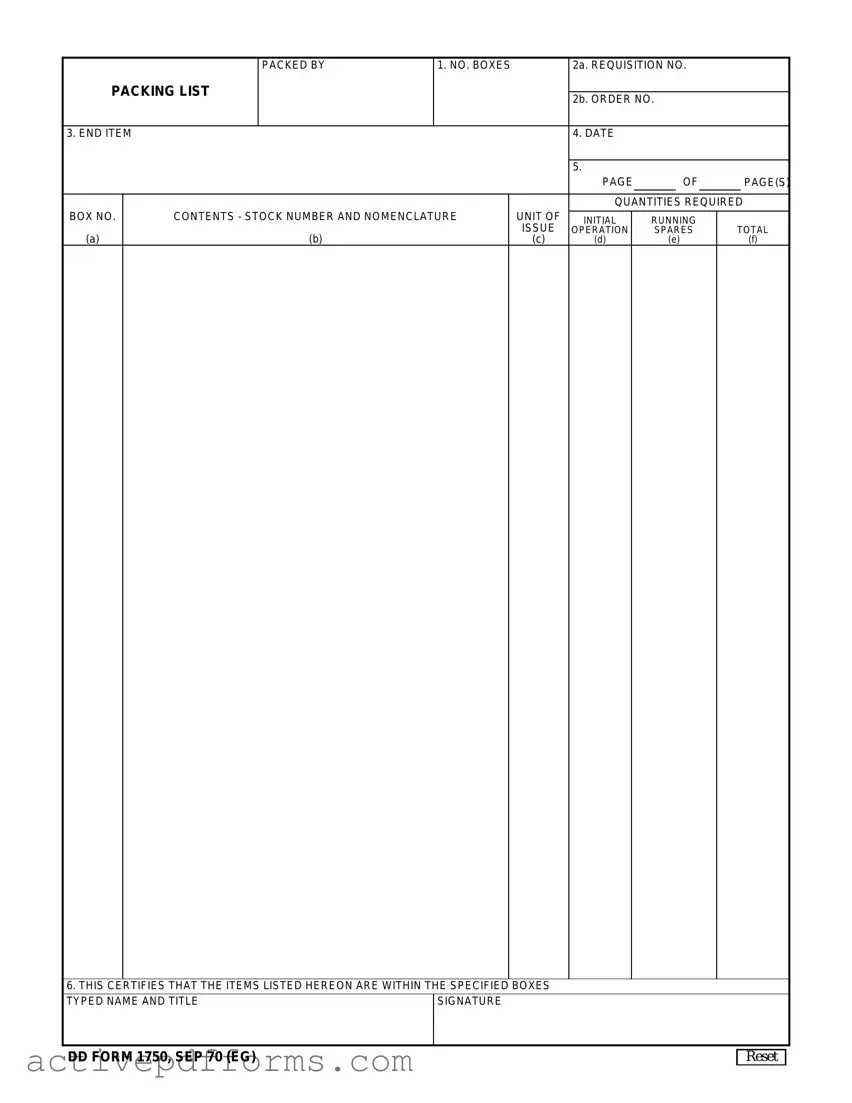The DD Form 1750, often referred to as the Packing List, plays a critical role in the logistical operations of the United States Department of Defense. This essential document accompanies shipments of equipment and supplies, providing detailed information about the contents of packed boxes. It outlines not only the number of boxes but also includes the requisition and order numbers, making the tracking of shipments more manageable. Furthermore, the form specifies the end item's stock number, nomenclature, and the directive under which it was assembled, ensuring that every piece of equipment can be accurately identified and accounted for. The preparation date and a page reference enhance the form's utility by linking it to a broader set of shipping documents. More than just a simple list, the DD Form 1750 categorizes items into initial operational spares and running spares, indicating those necessary for the operation of the equipment versus those shipped as spare parts and accessories. A unique feature of this form is its certification section, where the packer verifies that the items listed are indeed within the specified boxes, adding a layer of accountability to the packing process. Additionally, notes to the consignee offer guidance on how to utilize the list effectively, whether for reference or as a supporting document to property books. Through these features, the DD Form 1750 serves as an indispensable tool in the efficient and accurate management of military logistics.


